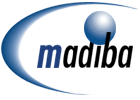Current System Landscape and Components
Before planning the migration, it’s essential to assess the current system status, components, versions, and support pack levels. Understanding the existing infrastructure ensures a smooth transition while identifying any dependencies that may impact the migration process.
Overall System Architecture
A detailed landscape diagram with internal and external system connections must be clearly depicted. Additionally, understanding whether the system is on-premise or hosted in a cloud environment (AWS, Azure, or another provider) is crucial for future planning.
S/4 HANA Migration Strategy: Conversion, Greenfield, or Selective Migration?
Organizations must decide between
- System Conversion (Brownfield): Upgrading the existing ECC system to S/4 HANA while retaining historical data and configurations.
- New Implementation (Greenfield): Starting fresh with a new system, allowing for a complete redesign of processes.
- Selective Data Transition: A hybrid approach where only specific data and configurations are migrated.
A thorough feasibility study should be conducted to conclude the most suitable approach.
Infrastructure Planning: On-Premise vs. Cloud
Do you want to remain on-premise, or do you see cost savings and scalability benefits in moving your infrastructure to AWS, Azure, or another cloud provider? Cloud migration can offer significant advantages in terms of flexibility, performance, and cost optimization.
Database Size and Archiving Policies
- What is the current database size?
- When was the last archive performed?
- What are the archiving policies in place (hot store/cold store duration restrictions, retention policies, etc.)?
These factors play a crucial role in determining system performance and storage optimization.
Add-ons and Customizations
- Which SAP and third-party add-ons are currently in use?
- Is the system Unicode-compliant?
- Has the business partner model been implemented, and is customer-vendor integration (CVI) completed?
Understanding these aspects ensures that necessary adjustments are made before the migration.
Business Scenario Recommendations (BSR) and Solution Manager
- Has SAP conducted a Business Scenario Recommendation (BSR) analysis? If yes, reviewing the report is essential to understand the potential benefits of S/4 HANA.
- Which version of Solution Manager is currently in use? Upgrading to Solution Manager 7.2 is highly recommended, as it comes at no additional cost and provides enhanced capabilities for system monitoring and optimization.
FIORI and Industry-Specific Features
- Do you have a FIORI system in place (Gateway Hub or another setup)?
- Which industry business functions and switches are critical to your operations?
S/4 HANA comes with an enhanced user experience through SAP FIORI, making it vital to evaluate existing applications and ensure compatibility.
Analytics, BW, and Business Intelligence Landscape
- What does the current BW and analytics/BOBJ (BusinessObjects) landscape look like?
- Are there any specific reporting tools in use?
A robust analytics strategy will help organizations maximize the benefits of real-time data processing in S/4 HANA.
Security and Compliance
- What are the existing security setups, including cybersecurity software and access controls?
Migrating to S/4 HANA requires a strong security framework to safeguard critical business data and ensure compliance with regulatory standards.
Project Timeline and Financial Year-End Considerations
- When do you plan to execute this project?
- When is your financial year-end closing?
Since an S/4 HANA conversion impacts financial processes, aligning migration timelines with financial closures is crucial to avoid disruptions.
Custom Code and Development Tools
- What is the level of custom code in your current system (low, medium, or high)?
- Have you conducted a code clean-up to eliminate unused code?
- Do you have ABAP development tools such as Eclipse in place?
S/4 HANA introduces a simplified data model, which may require significant changes in custom developments.
Licensing and SAP Team Involvement
- Do you already have an S/4 HANA license, or are you evaluating the costs?
- What is your SAP team structure, and how much involvement is expected (low, medium, or high)?
A well-structured team with clear responsibilities ensures a seamless migration process.
Final Thoughts
Migrating to S/4 HANA is more than just a technical upgrade—it’s an opportunity for business transformation. Evaluating the current landscape, defining a clear strategy, and ensuring stakeholder alignment are critical for a successful transition. Whether you choose system conversion, a new implementation, or selective migration, a well-planned approach will maximize the value of your investment in S/4 HANA.

